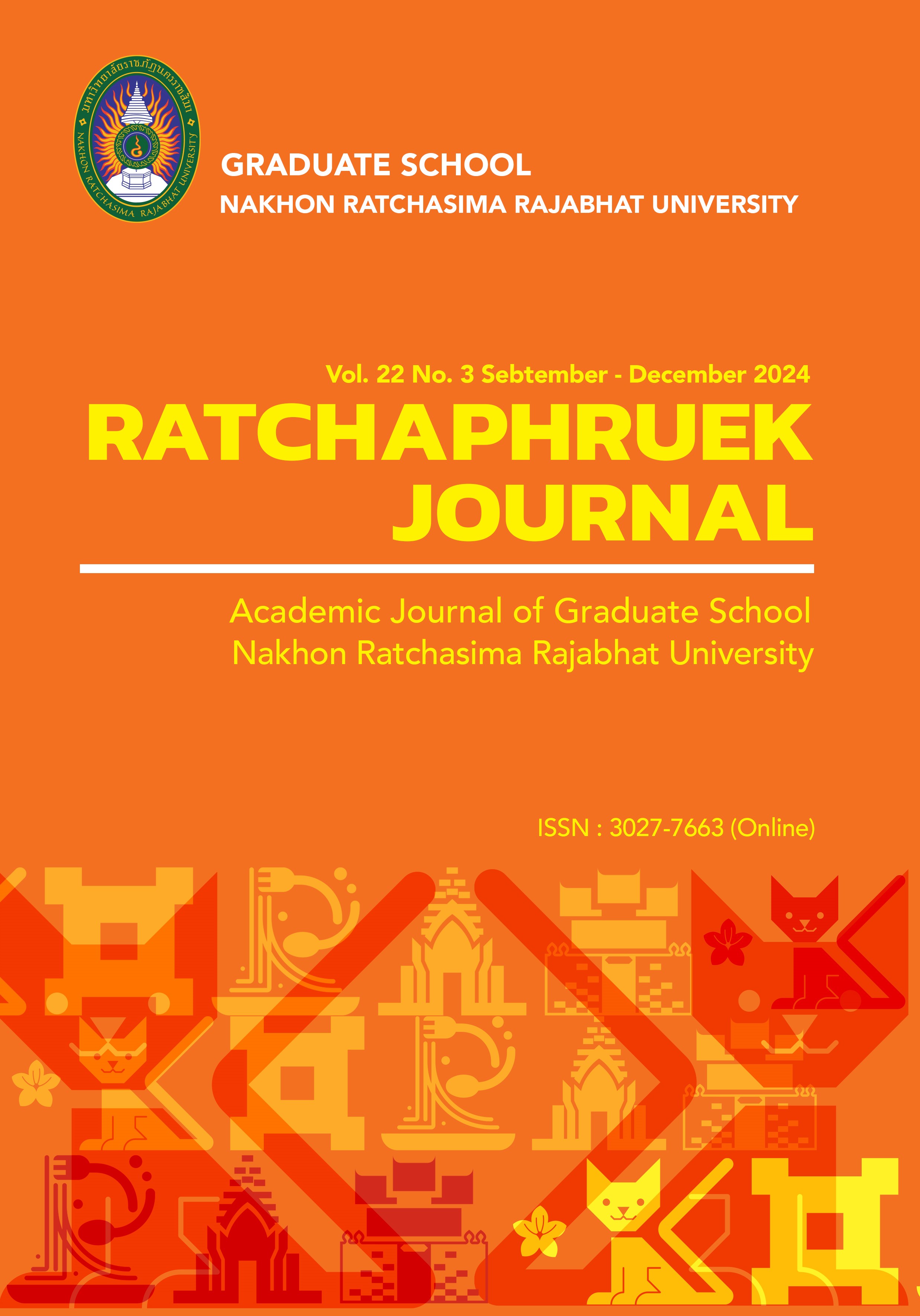A Comparison of Learning Achievement on Enjoyable Thinking with Pyramid Cone and Sphere and Problem Solving Ability of Grade 9 Students between Using MEAs and SSCS Model
Main Article Content
Abstract
The purpose of this study were to compare learning achievement, problem solving ability, and learning satisfaction after learning between using of MEAs and SSCS model. The sample group of this study were 92 students of grade 9 selected by using a cluster random sampling. The research instruments were lesson plans of MEAs and SSCS model, an achievement test, a problem solving ability test, and learning satisfaction questionnaires. The data were statistically analyzed by percentage, mean, standard deviation and t-test.
The findings of this research were as followed: 1) Learning achievement after learning MEAs and SSCS model was significantly higher than those before learning at .05 level. 2) Learning achievement after learning MEAs was significantly higher than after learning SSCS model at .05 level. 3) Learning achievement after learning MEAs and SSCS model was significantly higher than 70 percent criterion at .05 level. 4) Problem solving ability after learning MEAs and SSCS model was significantly higher than those before learning at .05 level. 5) Problem solving ability after learning MEAs was not significantly higher than after learning SSCS model at .05 level. And 6) Learning satisfaction after learning MEAs was significantly higher than after learning SSCS model at .05 level.
Article Details

This work is licensed under a Creative Commons Attribution-NonCommercial-NoDerivatives 4.0 International License.
References
กระทรวงศึกษาธิการ. (2560). ตัวชี้วัดและสาระการเรียนรู้แกนกลางกลุ่มสาระการเรียนรู้คณิตศาสตร์ (ฉบับปรับปรุง พ.ศ. 2560) ตามหลักสูตรการศึกษาขั้นพื้นฐานพุทธศักราช 2551. กรุงเทพฯ: โรงพิมพ์ชุมนุมสหกรณ์การเกษตรแห่งประเทศไทย.
กิติพงษ์ ลือนาม. (2564). วิธีวิทยาการวิจัยทางการศึกษา. นครราชสีมา: โคราช มาร์เก็ตติ้ง แอนด์โปรดักชัน.
ทศพล ศีลอาภรณ์ และนิเวศน์ คำรัตน์. (2563). ผลการจัดการเรียนรู้แบบเอสเอสซีเอสที่มีต่อความสามารถในการแก้ปัญหาทางคณิตศาสตร์และผลสัมฤทธิ์ทางการเรียนของนักเรียนชั้นมัธยมศึกษาปีที่ 4. วารสารวิชาการและวิจัยสังคมศาสตร์, 15(1), น. 89-102.
นุชจรีย์ ผิวแดง และวาสนา กีรติจำเริญ. (2564). การศึกษาผลสัมฤทธิ์ทางการเรียนหน่วยการเรียนรู้คณิตในชีวิตจริงและความสามารถในการสื่อสารทางคณิตศาสตร์ของนักเรียนชั้นประถมศึกษาปีที่ 3 โดยใช้การจัดการเรียนรู้แบบ SSCS. วารสารศึกษาศาสตร์ มหาวิทยาลัยสงขลานครินทร์ วิทยาเขตปัตตานี, 33(2), น. 27-40.
สถาบันส่งเสริมการสอนวิทยาศาสตร์และเทคโนโลยี. (2560). คู่มือการใช้หลักสูตรกลุ่มสาระการเรียนรู้คณิตศาสตร์ (ฉบับปรับปรุง 2560) ระดับชั้นมัธยมศึกษาตอนต้น. กรุงเทพฯ: ผู้แต่ง.
สุวพัชร โพธิ์ปิ่น และปรณัฐ กิจรุ่งเรือง. (2565). การจัดการเรียนรู้ตามแนวคิด Model-Eliciting Activities เพื่อส่งเสริมความสามารถในการแก้ปัญหาทางคณิตศาสตร์สำหรับนักเรียนชั้นประถมศึกษาปีที่ 2. วารสารวิจัยรำไพพรรณี, 16(1), น. 190-199.
อภิสิทธิ์ แก้วพวง, ชานนท์ จันทรา และวันดี เกษมสุขพิพัฒน์. (2566). การศึกษาความสามารถในการแก้ปัญหาและผลสัมฤทธิ์ทางการเรียนคณิตศาสตร์ของนักเรียนชั้นประถมศึกษาปีที่ 6 เรื่องทศนิยม โดยการจัดการเรียนรู้ตามแนวคิด Model Eliciting Activities (MEAs). วารสารการบริหารนิติบุคคลและนวัตกรรมท้องถิ่น, 9(3), น. 265-278.
อัมพร ม้าคะนอง. (2559). ทักษะและกระบวนการทางคณิตศาสตร์ (พิมพ์ครั้งที่ 3). กรุงเทพฯ: ศูนย์ตำราและเอกสารทางวิชาการ คณะครุศาสตร์ จุฬาลงกรณ์มหาวิทยาลัย.
Chamberlin, S. A. & Moon, S. M. (2005). Model-eliciting activities as a tool to develop and identify creatively gifted mathematicians. Journal of Secondary gifted education, 17(1), pp. 37-47.
Lesh, R. & English, L. D. (2005). Trends in the evolution of models and modeling perspectives on mathematical learning and problem solving. In H. Chick & J. Vincent (Eds.), Proceedings of the 29th annual conference of the International Group for the Psychology of Mathematics Education. University of Melbourne, pp. 192-196.
Lesh, R., Hoover, M., Hole, B., Kelly, A. & Post, T. (2000). Principles for developing thought revealing activities for students and teachers. In A. Kelly & R. Lesh (Eds.), Handbook of research design in mathematics and science education (pp. 591-646). Mahwah, NJ: Lawrence Erlbaum.
Lesh, R., Galbraith, P. L., Haines, C. R. & Hurford, A (2010). Modeling students' mathematical modeling competencies. New York: Springer.
Pizzini, E. L., Shepardson, D. P. & Abell, S. K. (1989). A rationale for and the development of a problem-solving model of instruction in science education. Science education, 7(5), pp. 523-534.
Stohlmann, M. (2013). Integrated STEM model-eliciting activities: Developing 21st century thinkers (Research report). Las Vegas: Nevada University.
Weir, J. J. (1974). Problem solving everybody’s problem. The Science Teacher, 41(4), pp. 16-18.


